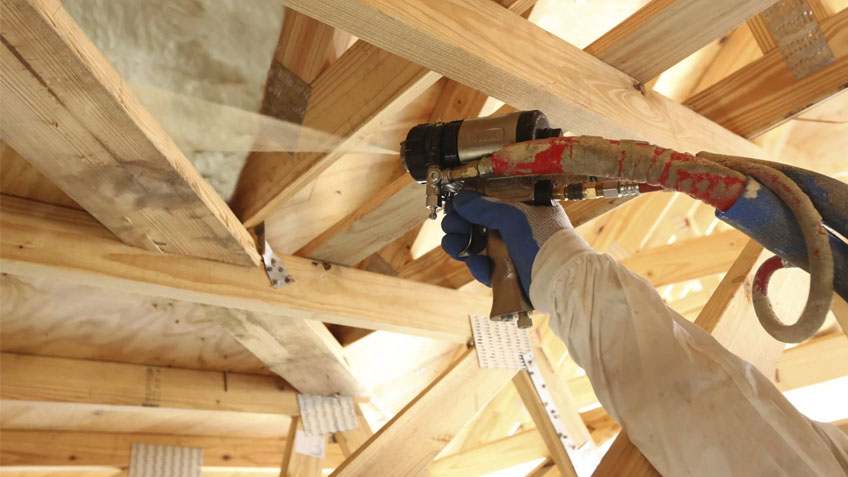1. Introduction
Creating a cozy home environment goes beyond aesthetics; it’s about ensuring comfort and efficiency. One key element in achieving this is investing in professional home insulation services. In this article, we’ll explore the various facets of home insulation services, its benefits, and why opting for professional services in the USA is a wise choice.
2. Understanding Home Insulation
A. Definition and Purpose
Home Insulation services is more than just stuffing walls; it’s a strategic method to regulate indoor temperature and reduce energy consumption. By understanding its purpose, homeowners can make informed decisions about their insulation needs.
B. Types of Insulation Materials
Not all Wall insulation materials are created equal. From traditional options like fiberglass to innovative choices such as spray foam, each has its advantages. We’ll delve into the pros and cons of different materials to help readers make informed choices.
3. The Importance of Professional Services
C. DIY vs. Professional Insulation
While some may consider a DIY approach to insulation, the benefits of professional Roof insulation cannot be overstated. We’ll compare the two approaches, emphasizing the long-term advantages of seeking professional expertise.
D. Long-term Benefits of Professional Installation
Professional insulation services extend beyond immediate comfort. We’ll explore the long-term benefits, including increased property value, reduced maintenance costs, and enhanced energy efficiency.
4. Energy Efficiency: A Key Advantage
E. Contribution to Energy Efficiency
How does insulation impact energy efficiency? We’ll break down the science, explaining how a well-insulated home leads to significant reductions in heating and cooling costs, contributing to a more sustainable lifestyle.
F. Reduction in Heating and Cooling Costs
An energy-efficient home translates to lower utility bills. We’ll provide real-world examples and statistics, showcasing the potential savings that homeowners can enjoy by investing in professional insulation services.
5. Environmental Impact
G. Positive Effects on the Environment
Beyond personal benefits, home insulation positively impacts the environment. We’ll discuss how choosing the right insulation materials contributes to sustainability and reduces the overall carbon footprint.
H. Sustainable Insulation Options
For environmentally conscious homeowners, we’ll explore sustainable insulation options, highlighting materials that are not only effective but also eco-friendly.
6. Health and Comfort
I. Impact on Indoor Air Quality
Home insulation isn’t just about temperature control; it also influences indoor air quality. We’ll discuss how proper insulation can create a healthier living space by preventing mold and allergen buildup.
J. Creating a Comfortable Living Space
Comfort extends beyond temperature. We’ll touch on how insulation contributes to a quieter, more peaceful home environment, enhancing overall comfort for residents.
7. Regulatory Compliance
K. Building Codes and Insulation Requirements
Navigating the maze of building codes can be challenging. We’ll simplify the process, outlining the insulation requirements set by local authorities and the importance of compliance for homeowners.
L. Ensuring Compliance with Local Regulations
Professional insulation services are well-versed in local regulations. We’ll discuss the importance of choosing a service provider who ensures compliance, avoiding potential legal and safety issues.
8. Financial Incentives
M. Government Incentives for Home Insulation
Governments often incentivize energy-efficient practices. We’ll explore the financial perks, tax credits, and rebates available to homeowners who invest in professional insulation services.
N. Cost-Effective Solutions for Homeowners
Contrary to common perception, professional insulation services can be cost-effective. We’ll break down the expenses, highlighting the long-term savings that outweigh the initial investment.
9. Common Insulation Challenges
O. Identifying Common Issues
Not all insulation projects go smoothly. We’ll shed light on common challenges homeowners may face, from improper installation to insulation degradation, and offer solutions to address these issues.
P. Solutions to Address Insulation Problems
Every problem has a solution. We’ll provide practical advice on addressing insulation problems, ensuring that homeowners can maintain a comfortable and energy-efficient living space.
10. Choosing the Right Insulation Service
Q. Factors to Consider When Selecting a Professional Service
Not all insulation services are created equal. We’ll guide readers through the factors to consider, from experience and expertise to customer service, helping them make an informed decision.
R. Reading Customer Reviews and Testimonials
The experiences of others matter. We’ll emphasize the importance of reading customer reviews and testimonials when choosing a professional insulation service, providing insights into the quality of service.
11. The Process of Professional Insulation
S. Step-by-Step Guide to Professional Insulation Services
What can homeowners expect during a professional insulation installation? We’ll provide a step-by-step guide, demystifying the process and preparing readers for potential disruptions.
T. Timeline and Potential Disruptions
Transparency is key. We’ll discuss the typical timeline of a professional insulation project and address potential disruptions, ensuring homeowners are well-prepared for the process.
12. Case Studies
U. Real-Life Examples of Successful Insulation Projects
Illustrating success stories adds a personal touch. We’ll share real-life case studies, showcasing homes transformed by professional insulation services, with before-and-after scenarios.
13. Frequently Asked Questions (FAQs)
Q1: How does insulation impact energy efficiency?
A1: Insulation creates a barrier that prevents heat transfer, reducing the need for excessive heating or cooling and ultimately lowering energy consumption.
Q2: Are there sustainable insulation options available?
A2: Absolutely. Materials like recycled denim, cellulose, and sheep’s wool offer effective insulation while being environmentally friendly.
Q3: Can I install insulation myself, or is professional service necessary?
A3: While DIY is an option, professional services ensure proper installation, compliance with regulations
